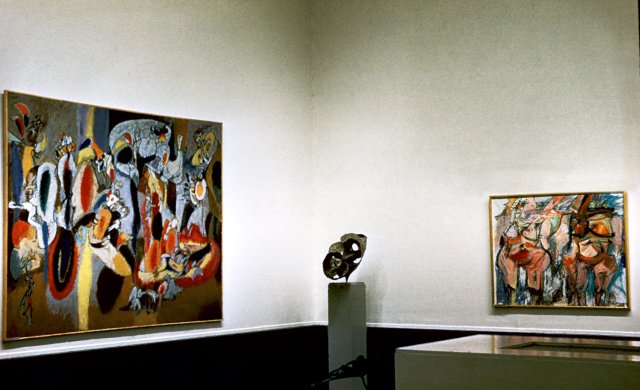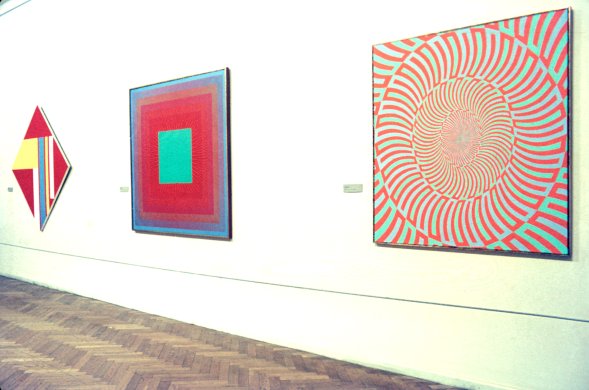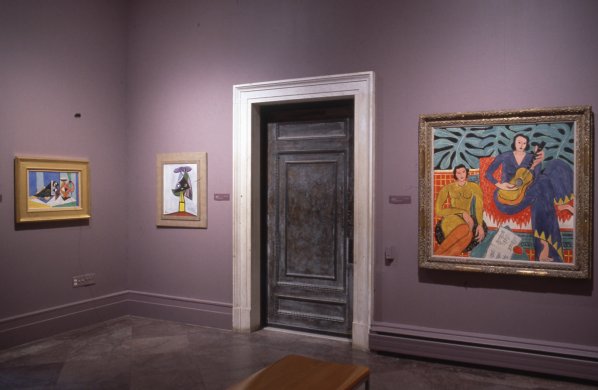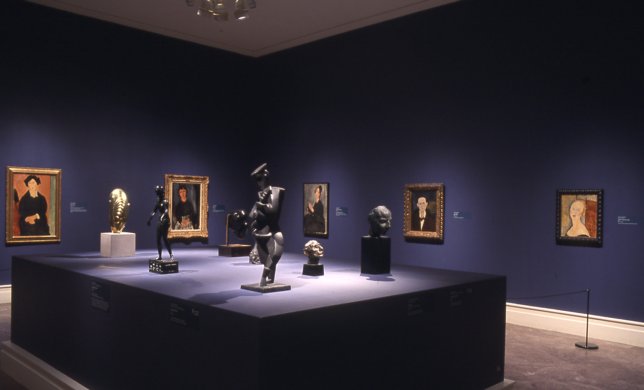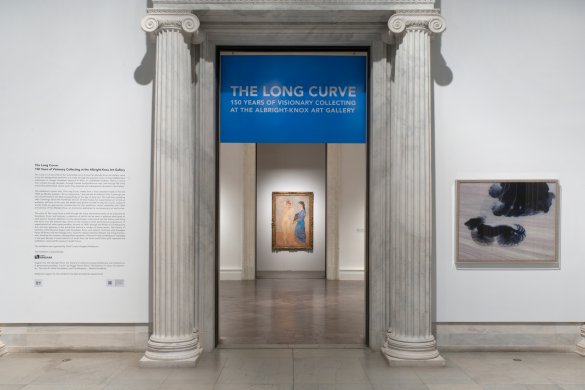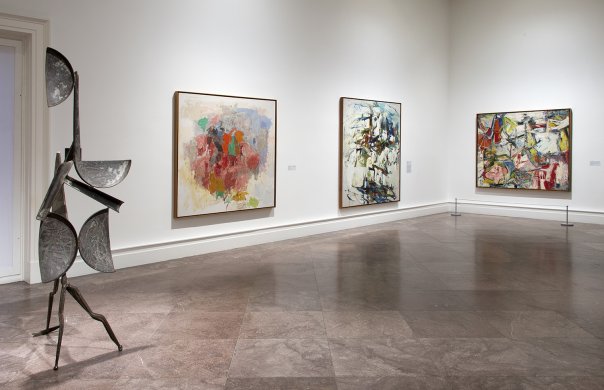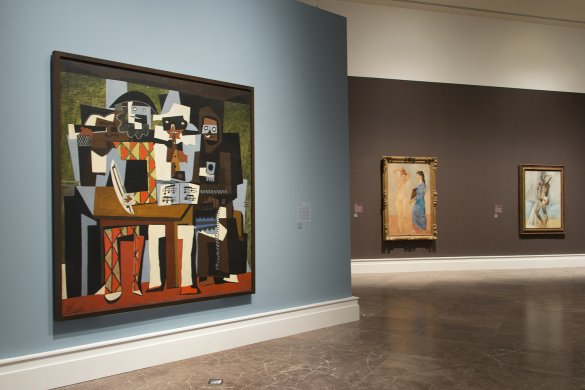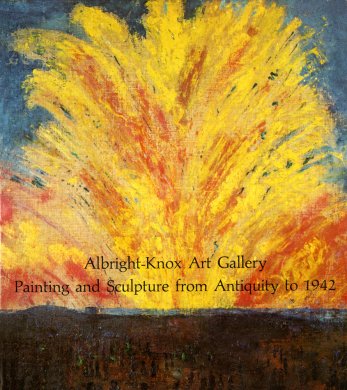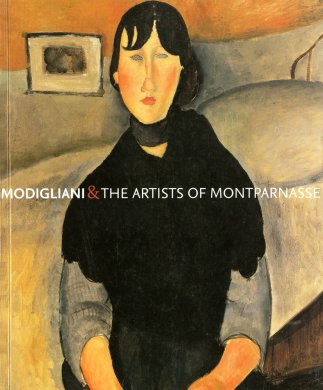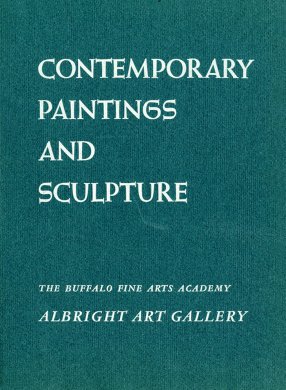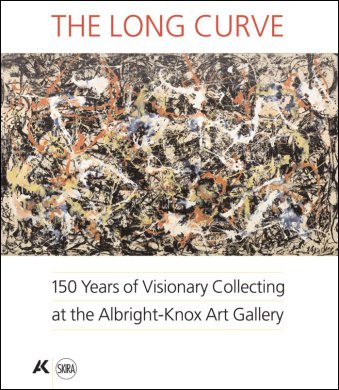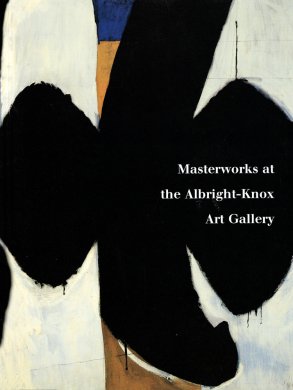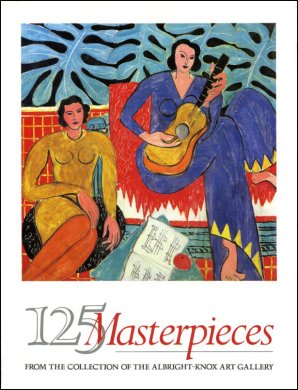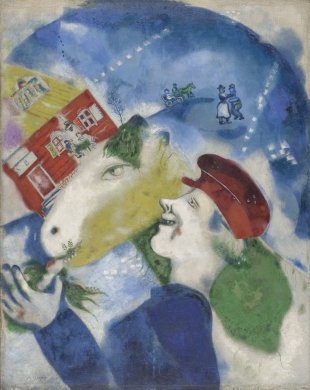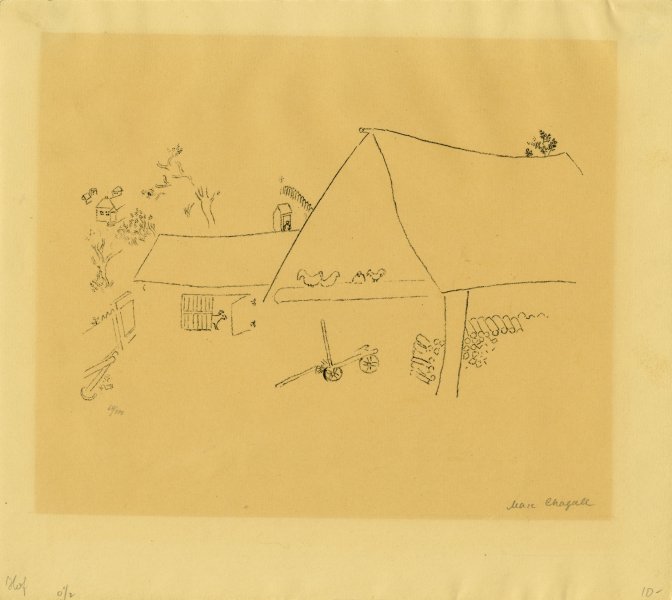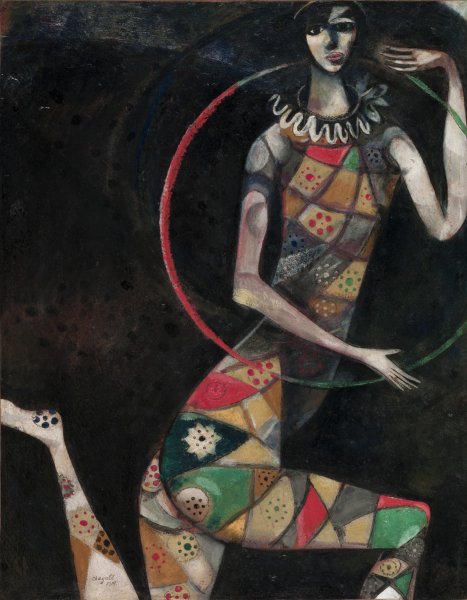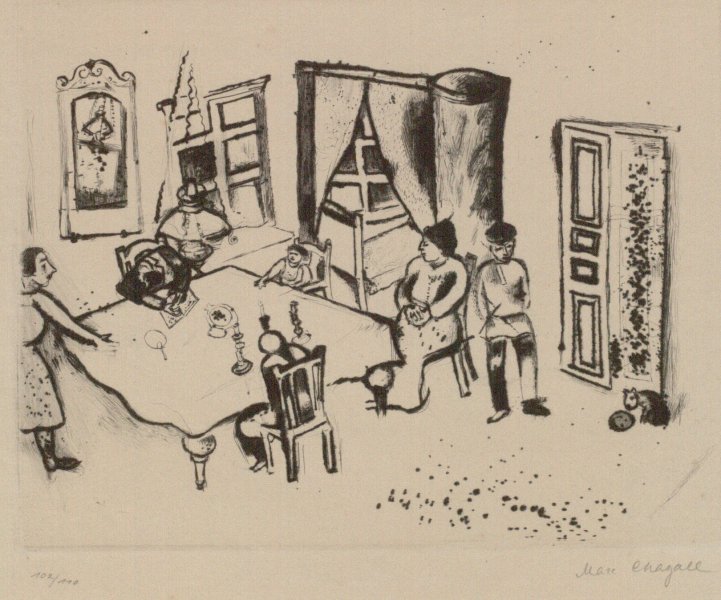Marc Chagall
Belarusian, born Vitebsk, Russia (now Belarus), active in France, 1887-1985
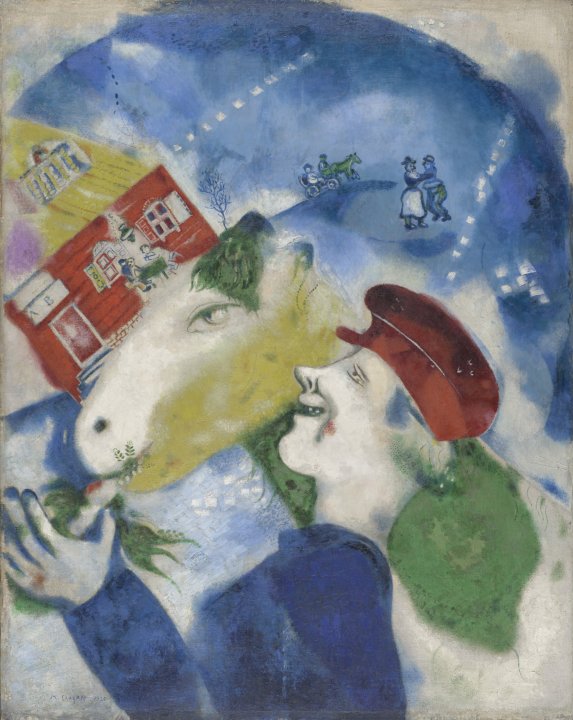
Marc Chagall (Belarusian, 1887–1985). La Vie paysanne (Peasant Life), 1925. Oil on canvas, 39 3/8 x 31 1/2 inches (100 x 80 cm). Collection Albright-Knox Art Gallery, Buffalo, New York; Room of Contemporary Art Fund, 1941 (RCA1941:16). © Estate of Marc Chagall / Artists Rights Society (ARS), New York / ADAGP, Paris
La Vie paysanne (Peasant Life), 1925
Artwork Details
Collection Highlight
Materials
oil on canvas
Measurements
support: 39 3/8 x 31 1/2 inches (100.01 x 80.01 cm); framed: 48 1/2 x 40 5/8 x 3 1/4 inches (123.19 x 103.19 x 8.26 cm)
Collection Buffalo AKG Art Museum
Credit
Room of Contemporary Art Fund, 1941
Accession ID
RCA1941:16
Marc Chagall was born into a Hasidic Jewish family in an area of the Russian Empire that is now Belarus. The artist’s early life formed the basis of his artistic themes, and, in 1911, not long after moving to Paris, Chagall painted I and the Village, his first exploration of imagery reminiscent of his childhood. In 1925, he revisited this motif in Peasant Life and several related tableaux. All are based on a free association of images drawn from folklore, his memories, and his imagination that coalesce in a dream-like atmosphere. Peasant Life repeats the basic compositional structure of diagonals and circles found in I and the Village, but is more abstract and less schematic. The principal motif remains a young man and an animal. However, in Peasant Life he is feeding a horse carrots, which suggests a synergy between man and beast. The arc at top recalls the Earth, reinforcing this coexistence. At left, a family gathers around a table in a building with a sign bearing what is most likely a Cyrillic abbreviation for Lavka ("little shop"), presumably a reference to the grocery store operated by Chagall’s mother. The overall optimistic tone of the painting continues in depictions of a horse-drawn carriage ride and dancing figures, as well as the vivid color palette. Although Chagall at times directly addressed the oppression and difficulties faced by Jews in Eastern Europe, paintings such as this reflect the joyful side of Judaism and the comfort of an all-embracing, loving Creator.
